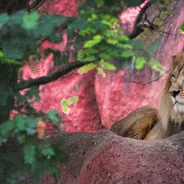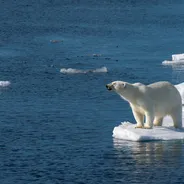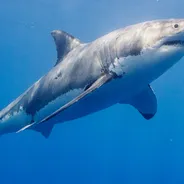With their pointed teeth, their cold, dead eyes, and their ability to snap a person in two, great white sharks are amongst the most feared creatures on Earth.
Luckily for us, they tend to keep to their ocean habitat - so there's very little chance that we would ever have to encounter one unexpectedly (providing you stay on dry land).
Because of that, though, there are still many things we don't know about great whites. So, in order to find out more, a team of researchers from Australia and the USA attached cameras to some of the creatures - and ended up making some amazing discoveries about their hunting habits.
"We tagged eight white sharks ranging from 275 to 365 cm total length with high-resolution camera/motion sensor AVEDs near a Cape fur seal colony on Geyser Rock, in the Dyer Island Marine Reserve, near Gansbaai, South Africa during May 2014," the researchers explained.
"Sharks were attracted to a research vessel before being fitted with AVEDs (comprising HD video cameras and 12 channels of biologging data), using a minimally invasive stainless steel fin clamp."
What they found was that the enormous beasts were able to artfully dodge and weave their way through kelp forests in order to hunt down their prey.
You can see footage of one of the sharks hunting here:"A total of 28.5 h of video data from eight sharks were analysed and a total of 1340 incidences of kelp presence were recorded," the team said.
"Seals were in groups of one to three individuals and responded to the presence of the shark by blowing bubbles, swimming deeper into kelp or hunkering to the seafloor. The shark responded by turning sharply, eventually pushing directly through kelp while increasing activity."
While the team found that "No successful predation events were observed in the footage," they concluded that the sharks were tactically using the kelp in order to conceal themselves and hunt for seals.

"The film we collected gives us a new perspective on this species. We can see how they interact with their surroundings in real time, and they are able to make some pretty spectacular 180 degree turns in the kelp forest," explained Murdoch University PhD student, Oliver Jewell.
"In the past we would have to guess. We would track sharks to the edge of the kelp forest but then lose the signal. Being able to see what these fish do in this habitat helps to bring another layer of understanding to the behaviour of these ocean giants."
Though the team did not capture any evidence of a successful hunt, they believe that what they did learn meant the project was worth the effort.
"At times we would have to spend many hours at sea, perched over the side of a boat to deploy these tags, with no guarantees to even see a shark," said Dr Taylor Chapple, expedition leader from Stanford University. "But the incredible data made it all worthwhile."
"We are really only scratching the surface with this study - there are so many layers to their behaviour. In the 12 years I’ve been studying them, it’s become clear white sharks have some very distinct behavioural traits," said Jewell. "More research of this nature is needed to help reveal more about this incredible species, so we can inform management and do more to ensure their survival."












